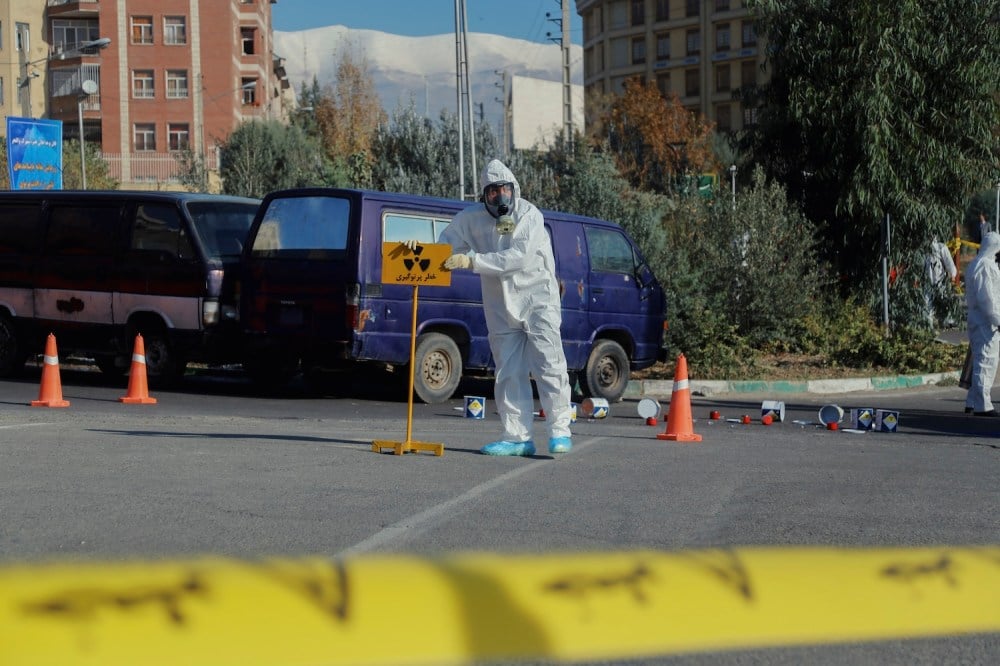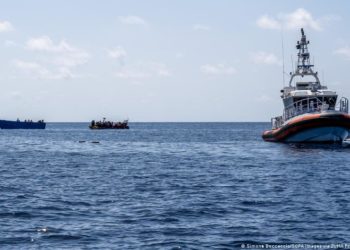On June 22, U.S. President Donald Trump asked, “[I]f the current Iranian Regime is unable to MAKE IRAN GREAT AGAIN, why wouldn’t there be a Regime change???” That comment came amid an extensive Israeli military campaign that, although ostensibly aimed at rolling back Iran’s nuclear program, was also clearly aimed at weakening and perhaps even collapsing the regime. Today, the fragile cease-fire between Israel and Iran has dampened discussion of this possibility, but there is reason to think it may reemerge, or that other factors may contribute to the fall of the Iranian government.
For decades, the primary international concern about Iran’s nuclear program has been how Tehran could use its nuclear materials, technologies, and expertise to produce nuclear weapons. But if the Islamic Republic were to suddenly collapse, preventing these resources from falling into the wrong hands would be a more pressing concern.
Though there has been a heated debate over the extent of the damage caused by U.S. and Israeli strikes, the fact is that Iran’s nuclear infrastructure has not been totally destroyed. Iran still has uranium mining capabilities and nuclear power and research reactors, as well as whatever material or technology could be salvaged from damaged enrichment sites, including Natanz and Fordow. Most importantly, Iran still likely possesses some if not all of its roughly 8,000 kilograms of enriched uranium, including at least 400 kilograms of 60 percent enriched uranium—enough for 10 nuclear weapons, if further enriched to weapons grade. Iran also likely retains a large stockpile of advanced centrifuges and centrifuge parts and potentially specialized equipment to make those machines, as well as documents and equipment associated with its former nuclear weapons program. There are also likely hundreds if not thousands of scientists in Iran who possess critical nuclear know how, including how to operate centrifuges and build weapons. In 2018, Mossad’s exfiltration of hidden documentation reaffirmed the extensive work Iran did to develop the technologies and processes needed for nuclear weapons.
The International Atomic Energy Agency (IAEA) did not have access to Iran’s centrifuge stockpiles and manufacturing capabilities for years before the recent U.S. strike, and inspectors have not had access to any Iranian nuclear sites since June 13. With the onset of bombing by Israel, if not before, Iran likely hid much of this material and equipment in multiple secure locations. The resulting lack of a clear baseline will make it much harder for the international community to know whether any material or technology has been lost or stolen. IAEA Director-General Rafael Grossi has been explicit about losing “continuity of knowledge” that had been built up painstakingly over the last decade. On July 2, Iran also announced that, consistent with a new law, it was suspending its cooperation with the IAEA.
Experts know little about Iran’s nuclear security practices, but the measures necessary to keep nuclear materials and sensitive equipment within state control are typically vast. They include physical protection measures (e.g., guns, gates, and guards), methods for controlling and accounting for nuclear material produced, and ideally, programs that mitigate the risk of insider theft and espionage. But sustaining this system requires a functioning government. Guards and scientists will not show up if they are not paid or if chaos and violence prevent them from getting to work safely. If the current government collapses, it is entirely plausible that Iran’s nuclear security enterprise will collapse with it.
The most concerning matter in that scenario would be the fate of the highly enriched uranium (HEU). Even though it is not technically weapons-grade uranium (usually defined as uranium enriched to at least 90 percent), Iran’s 60 percent enriched uranium could be used to fashion a crude nuclear device. As producing this material is the most difficult step in making a nuclear weapon, it would be extremely attractive to any state or nonstate actor interested in obtaining a nuclear bomb. The 400 kilograms of HEU in Iran is roughly the weight of 20 water cooler bottles and is stored in canisters that could be fairly easily loaded onto a truck. The current location of Iran’s HEU is unclear, leaving the international community with a difficult search for it should the regime fall.
Nuclear expertise is also valuable. Iranian nuclear scientists have over two decades of experience building, testing, and operating centrifuges—critical technologies for producing material for a bomb. In the years since the United States withdrew from the Joint Comprehensive Plan of Action, those scientists have also honed their skills producing uranium metal, an activity directly applicable to building a nuclear device. Other Iranian researchers have reportedly engaged in research and experiments with certain explosion systems and neutron initiators—important steps to building a bomb. Israel has killed some of those personnel but almost certainly not all of them. These individuals would be very attractive to a terrorist organization or a state interested in creating a nuclear bomb.
Given the lack of understanding about Iran’s remaining materials and capabilities, the inevitable chaos that would accompany any regime change could present the most serious nuclear security challenge since the fall of the Soviet Union. The nature of the problem would be far more acute than, say, in Iraq after the fall of the regime in 2003, the end of Qaddafi’s government in Libya in 2011, or the fall of the Assad regime in Syria in 2024. In Libya, for example, the central nuclear security challenge was that Qaddafi had stored tons of yellowcake in a warehouse in a small town on the edge of the Sahara Desert; that yellowcake would require considerably more effort to turn into a weapon than the HEU in Iran.
How should Washington respond if faced with this nuclear security crisis? Without guards or international inspectors on the ground, Washington may have to rely on its own intelligence capabilities and those of its allies to determine the whereabouts of Iran’s nuclear material and assess its vulnerability. Washington and its partners should begin thinking through options now for seizing any material at high risk of theft, including with U.S. or allied personnel. Such an option would not be risk-free, and the ability to carry it out would depend on a range of other factors, but it must stay on the table.
Governments around the world should consider sharing information and alerting a nascent Iranian government if it detects acute security vulnerabilities to sensitive nuclear material. And it should do so regardless of questions about the validity of that government, or how democratic or pro-U.S. it is. The risks of a terrorist acquiring a nuclear weapon are simply too great.
The international community should also ask any new Iranian government to rebuild relations with the IAEA, resume inspections of Iran’s nuclear sites unimpeded, and dedicate personnel to ensure Iran’s key facilities remain secure. Given the IAEA’s extensive history of monitoring Iran’s program and its ability to operate in dangerous environments, such as during Russia’s invasion of Ukraine, the agency could play a critical role.
With the fall of the Soviet Union, U.S. Sens. Sam Nunn and Richard Lugar developed a plan known today as the Cooperative Threat Reduction program (CTR) that helped secure nuclear weapons and facilities in close cooperation with Russia and former Soviet states. This program immediately implemented a series of upgrades to deal with the most glaring security issues, such as hardening facilities and installing equipment to account for all nuclear materials at a particular site.
Once a new Iranian government is in place, Washington and its partners should consider a similar effort to make Iran’s nuclear program as secure and proliferation-resistant as possible. One key part of this would be finding work for Iranian scientists who may be unemployed due to nuclear downsizing. The CTR’s work was aided by the fact that Soviet scientists and engineers, as stewards of a prestigious and successful nuclear weapons program, felt a great responsibility to manage their materials and know-how. Iranian scientists may not have the same motivation, so some additional incentives might be necessary. Depending on the orientation of Iran’s new government, these could include implementing projects to help grow and modernize Iran’s civil nuclear program in line with strong nonproliferation standards or assisting Iran with filling any nuclear security gaps. China’s role in modernizing the Arak reactor as part of the Iran nuclear deal—although left incomplete due to the U.S. withdrawal and subsequent deterioration of that deal—shows how other countries can also play a role.
The fall of the Iranian government may or may not mitigate the long-term challenge posed by Iran’s nuclear program, but it would certainly pose a more immediate nuclear security risk. The U.S. and the international community will have a lot of important issues on their plate—preventing a nuclear catastrophe needs to be at the top.
The post Iran’s Collapse Could Cause a Nuclear Security Nightmare appeared first on Foreign Policy.




